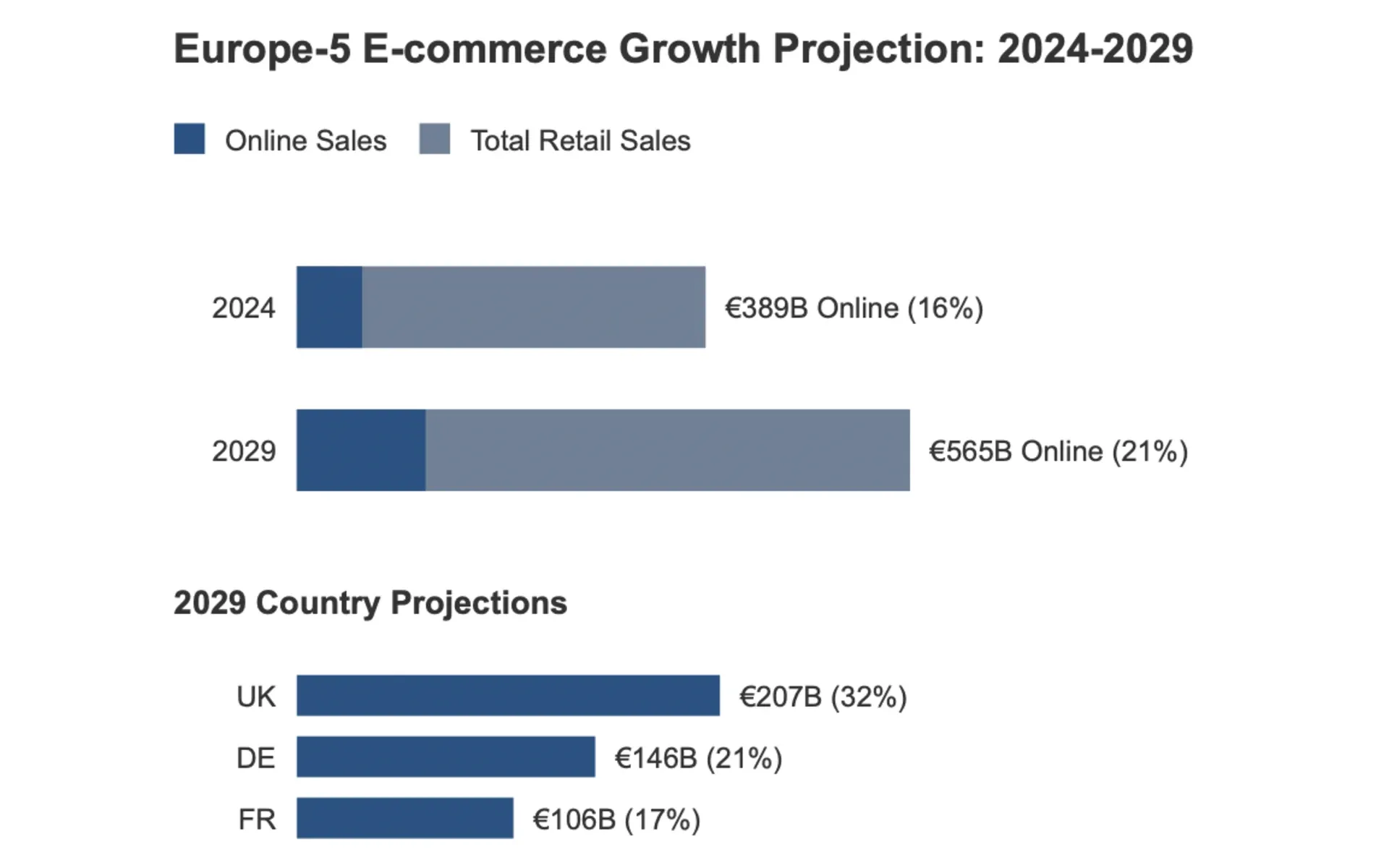European e-commerce to hit €565bn by 2029 as digital retail expands
New Forrester data shows Europe-5 online retail growth will outpace traditional stores with 7.8% annual increase through 2029.

According to Forrester's latest forecast released on January 31, 2025, online retail sales across Europe's five largest economies will reach €565 billion by 2029, marking a significant shift in consumer purchasing patterns. The projection, detailed in Forrester's Europe-5 Online Retail Forecast report, indicates digital commerce will constitute 21% of total retail sales across France, Germany, Italy, Spain, and the UK by 2029, up from 16% in 2024.
The data shows a compound annual growth rate (CAGR) of 7.8% for online retail over the next five years, while traditional brick-and-mortar sales are expected to grow at just 1.7% annually. This represents a notable deceleration from offline retail's previous growth rates of 8.9% in 2022 and 4.1% in 2023.
Among the Europe-5 nations, Germany maintains its position as the largest total retail market, with sales projected to reach €693 billion by 2029. The United Kingdom follows with anticipated retail sales of £552 billion (€649 billion), while France is expected to achieve €616 billion in total retail sales.
The UK continues to lead in digital commerce penetration, with online sales forecasted to reach £176 billion (€207 billion) by 2029, increasing from £130 billion (€152 billion) in 2024. This translates to 32% of total UK retail sales occurring online by 2029, up from 27% in 2024. Germany's online retail sales are expected to grow from €97 billion to €146 billion, while France projects an increase from €73 billion to €106 billion during the same period.
According to Jitender Miglani, Principal Forecast Analyst at Forrester, several economic factors are driving this growth. "A combination of declining inflation, declining interest rates, falling unemployment rates, rising real disposable incomes, increasing retail trade volumes, and a strong rebound in tourism has created a positive economic climate that will support retail sales growth in the Europe-5 countries over the next five years," Miglani noted.
The analysis indicates that two-thirds of e-commerce growth will stem from increased spending per buyer, with the remaining third attributed to expansion of the online buyer population. Cross-border marketplace platforms, particularly Chinese e-commerce entities such as AliExpress, SHEIN, and Temu, are contributing to this growth through their increasing presence in European markets.
Despite the digital shift, physical retail maintains its relevance through omnichannel integration. Retailers including Decathlon and Zalando are expanding their physical presence, recognizing stores' role in providing tactile experiences and serving as hubs for services such as click-and-collect and returns. These physical locations also drive increased online sales in surrounding areas.
The forecast suggests a resurgence in discretionary retail sales, which had been constrained over the past two years due to inflation-driven focus on essential purchases. Categories such as fashion and consumer electronics are anticipated to see renewed growth as consumer purchasing power improves.
Total retail sales across the Europe-5 economies are projected to reach €2.7 trillion by 2029. The forecast encompasses 22 product categories, with historical data extending back to 2002, providing a comprehensive view of retail market evolution across these major European economies.
Forrester's analysis indicates that marketplace-driven cross-border e-commerce will play an increasingly significant role in European retail, as digital platforms expand their market presence and enhance their service offerings. This transformation suggests a fundamental shift in European retail dynamics, with digital commerce becoming an increasingly integral component of the overall retail landscape.

